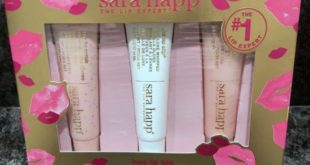
Hey, how are you? No, ah, wait, sorry, this is awkward—I’m actually talking to your gut. How are you feeling today, gut? I know you’re often neglected in these big skin conversations, but I want you to know we know how important it is you stay in good health. And one (recently trending) way to help make sure that happens is with probiotics. In 2020, consumers have access to a veritable buffet of ‘em which can be… a lot to sort through. What helps is talking to a handful of probiotic experts: gastroenterologist Dr. Niket Sonpal, biochemist and nutrition expert Paula Simpson, and Seed Co-Founder Ara Katz. Together, they make up a team of microbiome mythbusters ready to sort out your biggest confusions. Like this one: “It’s important to first understand not all products marketed as ‘probiotics’ are actually probiotics,” explains Katz. Want to know what the heck she’s talking about? Wish you could take all three experts to the supplement aisle with you? Well, now you can. Let’s get to it.
Wait, back up. What’s a microbiome?
Understanding your microbiome is the first step to understanding probiotics. “Your microbiome is a dynamic ecosystem mainly composed of bacteria that lives within the mouth, nose, digestive tract, and on the skin’s surface,” explains Simpson. A lot of that bacteria has been in your body since you were a baby. Birth and breastfeeding are two ways your gut starts to become populated by microorganisms, which jumpstart your immune system and digestion function. “These 38 trillion microorganisms perform critical functions like digesting food, managing inflammation, and synthesizing key vitamins, metabolites and neurotransmitters,” offers Katz.
But the exact composition of microbes in your microbiome right now depends on your age, medications, environment, and diet. For example, “diets full of sugar and processed foods have been linked to a decrease in good bacteria in the microbiome,” says Dr. Sonpal.
Can probiotics re-balance my microbiome?
Yup! Even if you don’t experience signs of an out-of-whack gut (bloating, gas, and heartburn are some fun ones) you can think of probiotics as science-backed fertilizer to keep your microbiome happy. But before you wonder how the heck the human species got along for thousands of years without probiotic supplements, remember that probiotics have actually been a part of our diets for much of that time. “Traditionally,” notes Simpson, “we consumed probiotics as yogurt, kefir, sauerkraut, kimchi, and miso. They were fermented as a preservation method, but that process ended up helping our gut health.” But here’s the catch: because the probiotics in food products aren’t measured for potency, you can’t know for sure if you’re getting a benefit. That’s why they’re technically not considered probiotics, scientifically speaking. Now, we can isolate those helpful bacteria strains into a daily supplement—it’s easier to keep up with, and also more reliable for a steady dose. Plus, says Dr. Sonpal, “probiotic supplements can target specific health issues better than food can.”
What kind of health issues can probiotics help?
“An imbalanced gut may impair your body’s ability to absorb nutrients, regulate blood sugar, and store fat,” says Dr. Sonpal. And beyond the gut, you might also start to see a reaction in your skin. Simon adds, “Clinical studies have correlated chronic skin conditions including reactive skin, eczema, acne, atopic dermatitis, psoriasis, dandruff and photoaging with an imbalanced microbiome.” It’s all because of something called the gut-skin axis: a (very real!) scientific term that means happy gut, happy skin.
Cool, I’ll just go pick up any ol’ probiotic for my skin! Thanks!
No, wait, I have something else to tell you.
What is it?
You can’t just pick up any probiotic and hope for a skin miracle—only certain strains of probiotics have been shown to affect your skin. “Just like a golden retriever and a French bulldog are incredibly different, strains of bacteria can vary significantly,” says Katz. The two most common groups of probiotics are Lactobacillus and Bifidobacterium, often abbreviated L. and B. She adds, “Within each group, there can be hundreds or thousands of strains.” And only a few of those strains have been clinically studied to help your skin. This study has a pretty good list of all of them, if you want to cross-compare.
So probiotic supplements can help my skin—what about probiotics in creams?
“Ingested probiotics have a systemic effect on the body,” says Simpson, which is why she thinks they’re the first step to healthy skin. Your skincare routine can be supplemented by topical probiotics too—there’s just less scientific data to support just how well probiotics work in most products. At the very least, topical products containing probiotics will help strengthen your skin’s moisture barrier, which might be compromised from over-cleansing or environmental stressors.
How do I know when my good bacteria is back to normal?
Like other supplements you may be taking, probiotics move through and out of your body pretty quickly. “It’s a common misconception that through the use of probiotics, one can ‘balance’ the gut,” Katz explains. “Actually, compared to the tens of trillions of microbes already in your intestinal tract, the amount of new bacteria in your probiotic is just a drop in the bucket.” That’s why, if you want to experience the positive effects of probiotics—a better immune system, more regular poops, and, yes, calmer skin—you’ve got to take them daily.
Is there anything specific I should look for in a probiotic?
Absolutely! First off, the strains: a good probiotic lists the strains it contains, and you should be able to Google what each one is meant to support fairly easily. Or, work backwards—the skin-friendly probiotic list above is a safe place to start.
Then, consider the potency of your probiotic. In order for them to work, the cultures have to be living—which doesn’t necessarily mean your probiotic should be the refrigerated kind! “The most important thing to look for is demonstrated survivability, regardless of the storage conditions,” says Katz. She cites two different types of tests manufacturers can use to test their probiotics’ potency: a heat test and a SHIME test. The first is meant to simulate a worst-case-scenario situation that assumes the vehicle transporting your probiotics got stuck for two days in the ninth circle of hell. Refrigerated or not, you want to make sure your bacteria cultures don’t die en route to their consumer. And the second test is a Simulator of the Human Intestinal Microbial Environment, to make sure your probiotics stay viable all the way through your body. Ideally, the brand you buy probiotics from should be transparent about how they test their product’s efficacy.
OK, you’ve sold me! But before I go out and buy some—is there any reason I shouldn’t take a probiotic?
“It’s always best to talk to your doctor first, but in general, standard doses of probiotics are safe for people whether or not they have gut or skin issues,” advises Dr. Sonpal. He does note that you might experience an upset stomach or gas within the first few days after starting your regimen, but these symptoms usually go away as your body gets used to the probiotics. If you suffer from an autoimmune disorder or poor immune function in general, however, Dr. Sonpal recommends avoiding probiotics. If your immune system is compromised, bringing the bacteria party to your place might do more harm than good.
—Ali Oshinsky
Photo via ITG



